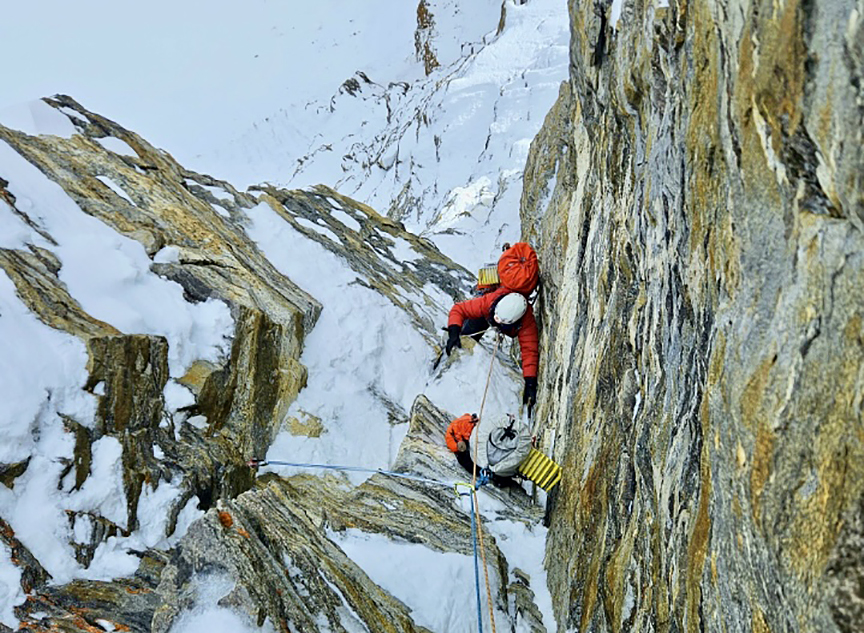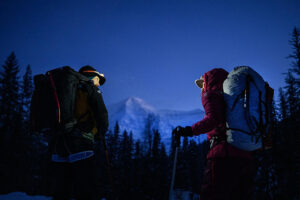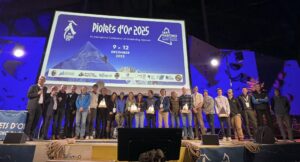A Slovenian women’s team has climbed four new, highly committed routes in the Indian Himalaya. It included the first ascent of 6,243m Lalung I, in pure alpine style.
In late August, Anja Petek, Patricija Verdev, Ana Baumgartner, and Ursa Kesar headed to the remote Lalung Valley in Ladakh. This region had been closed for many years because of political reasons, but a few years ago, it again opened for climbers. The Lalung Valley has many difficult, unclimbed peaks and remains poorly explored.
Even local porters didn’t know the area very well. They told the women that their base camp would be around 5,000m. It was, in fact, at 4,100m. It also featured a hazard not common in high-altitude mountaineering — bears. But more on that later.

Ursa Kesar, Patricija Verdev, Anja Petek, and Ana Baumgartner. Photo: Anja Petek
The Slovenians split into two groups. Petek teamed up with Verdev, and Baumgartner joined Kesar. Both targeted different goals.
On August 31, after acclimatizing, Petek and Verdev climbed a new route in 15 hours on one of the walls of an unnamed 5,332m peak. They named the 1,400m route Connection (VI-/V-IV).
Meanwhile, on September 10, Baumgartner and Kesar climbed a new 800m route on the same peak in eight hours (V-/IV-III).
Three days later, the Baumgartner-Kesar duo climbed another difficult rocky line on this peak in six hours (V+ / IV, 670m).
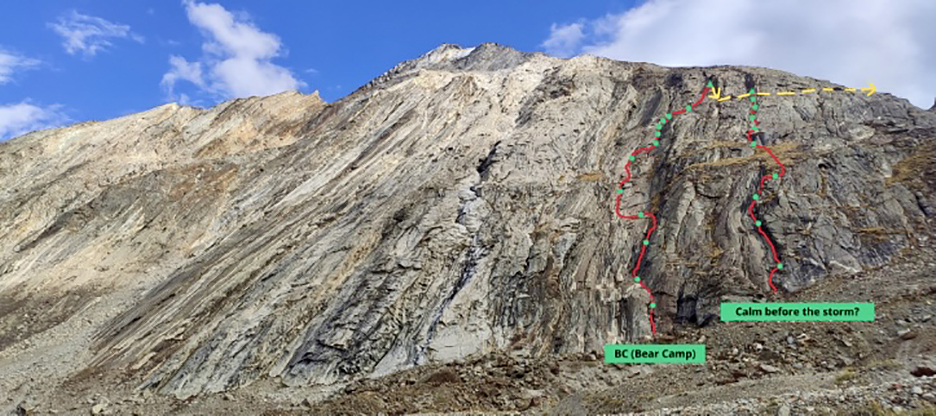
The two new routes, ‘BC (Bear Camp)’ and ‘Calm Before The Storm?’ on the unnamed 5,332m Peak. Photo: Ursa Kesar
The first ascent of Lalung I
Between September 9 and 14, Verdev and Petek summited the previously unclimbed 6,243m Lalung I by its difficult east ridge in alpine style.
Inees Dean, Alex Mathie, and Timothy Elson last attempted Lalung I via its north ridge in the autumn of 2022. They also tried Chiling II on the same expedition. In their report for the American Alpine Journal, Elson noted that Lalung I looked spectacular from a distance, but frozen soil and loose rock made up its north ridge, making it very unappealing.
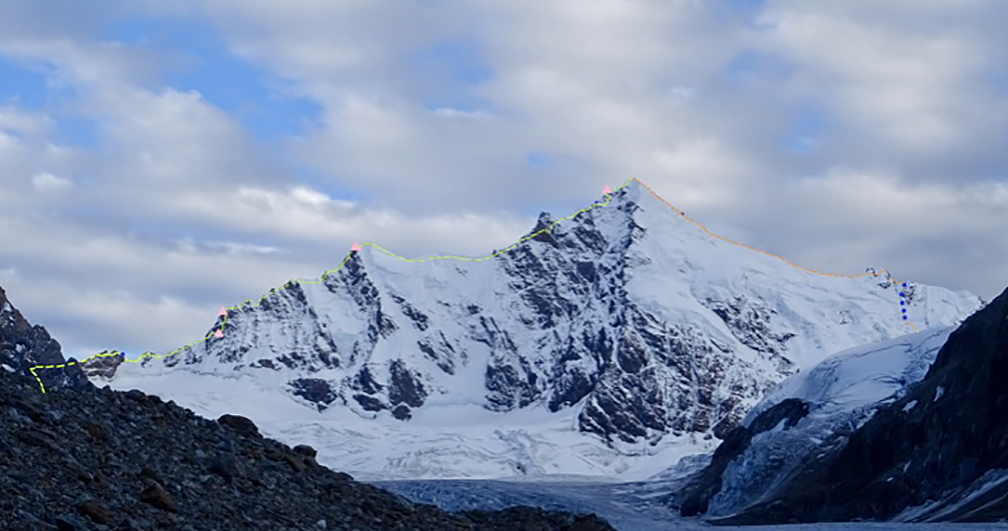
Lalung I and the route of the first ascent, marked with yellow. Photo: Patricija Verdev
A storm hits mid-climb
Petek and Verdev accessed the peak by a crevassed glacier and then began climbing the east ridge of Lalung I.
On the second day, the two women had to shelter in their tent because of a big storm that lasted until the end of the third day. The duo climbed during the night on the fourth and fifth days. On that fifth day, they managed to solve the last section.
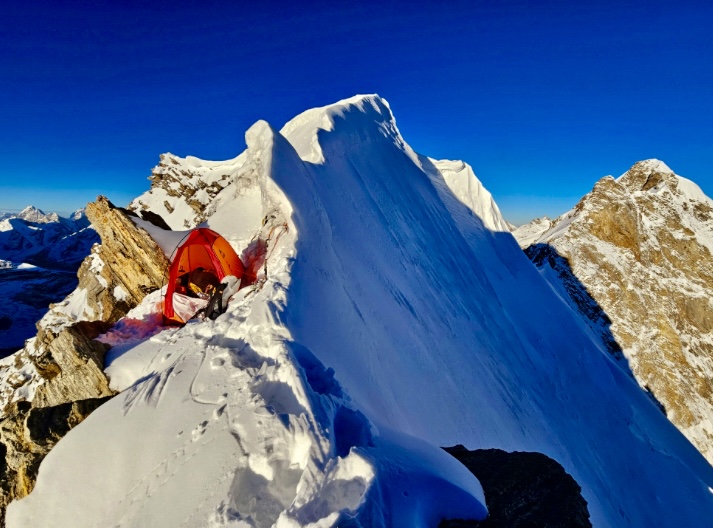
The fourth climbing day on Lalung I started with a sunny morning. Photo: Anja Petek
A hundred meters below the summit, they were preparing the tent for the night when suddenly, the wind swept away the tent poles. Petek and Verdev then bivouacked high on the mountain.
They awoke the next morning to fog and continued the last short distance to the summit.
”[At first,] when we approached the top, there was a strong diffused light, and…we weren’t sure where exactly the summit was,” recalls Petek.
But then, when they were 30m below the summit, the sun finally broke through.
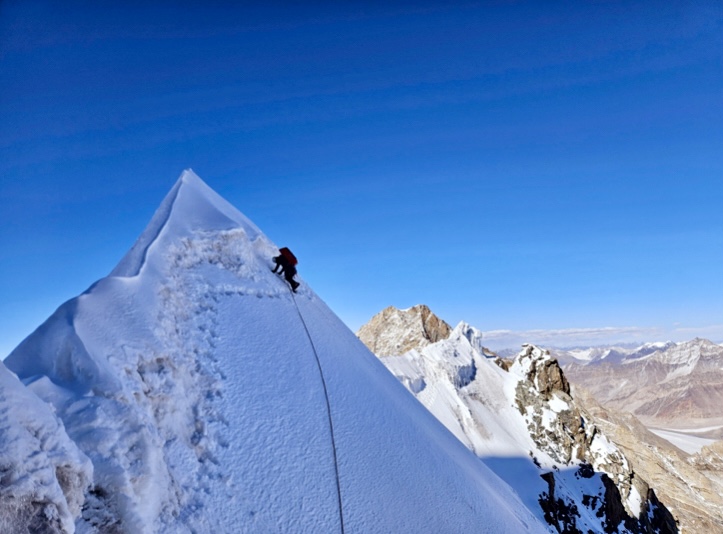
Patricija Verdev on Lalung I. Photo: Anja Petek
After summiting, Petek and Verdev descended down the west ridge and the north face. They reached the glacier in the late afternoon and made it back to Advanced Base Camp in eight hours. The next day, they continued to Base Camp.
They named the 2,000m route Here Comes The Sun (ED, M6+, AI5+). ED stands for Extremely Difficult, the highest level of the French six-point scale.
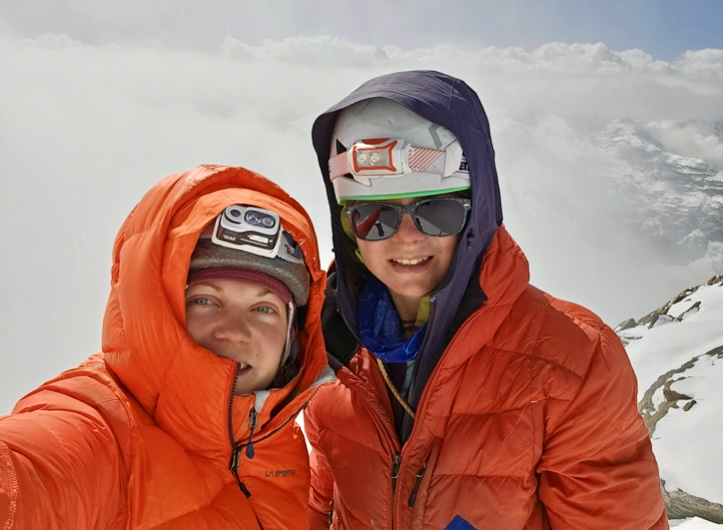
Anja Petek and Patricija Verdev on the summit of Lalung I. Photo: Anja Petek
Meanwhile, the bears
Apart from the difficulty of the new routes, the Slovenian climbers had to deal with two opportunistic bears that made several visits to base camp looking for food, according to Kesar. At first, the cooks successfully chased them away, but the bears stubbornly continued to return.
The bears made a total of 10 visits. They ate some of the expedition’s food, destroyed one tent, and also knocked down the toilet tent.
Finally, the team decided that enough was enough and abandoned base camp after their successful first ascent of Lalung I.
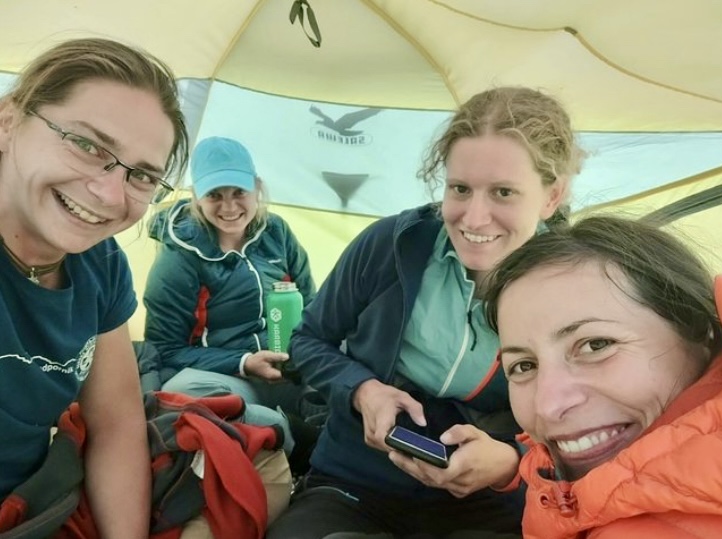
The Slovenian team. Photo: Patricija Verdev
Back home in Slovenia, Verdev told ExplorersWeb about the ascent of Lalung I, including how the terrain on the ridge was harder than it appeared from the north-northwest side of the mountain.
”[Yet] this expedition was really successful because we all came home with smiles on our faces,” recalls Verdev.
More about the climbers
Anja Petek is one of the most prominent Slovenian female alpinists. A psychotherapist by profession, she has already done expeditions in Kyrgyzstan and Peru and several difficult routes in the Alps. She climbed the east wall of 6,165m Hualcan in Peru with Andrej Jez and Aritza Monasterio and the north face of Triglav in Slovenia with Peter Boric, including the second winter ascent of the Cop Pillar on Triglav.
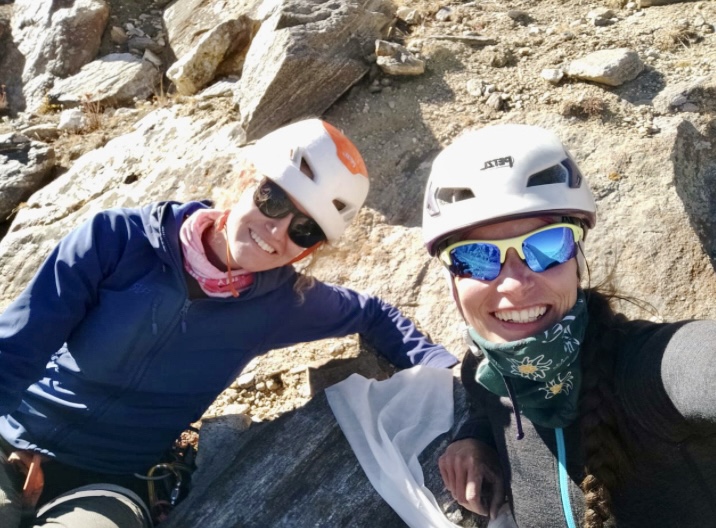
Ana Baumgartner and Ursa Kesar. Photo: Ursa Kesar
Patricija Verdev is an agricultural engineer with a wide experience climbing in the Alps and Tatra mountains. On this expedition, she served as organizer.
Ana Baumgartner will complete her doctoral degree in pharmacy this year and has climbed in the Central and Slovenian Alps. Her partner on this expedition, Ursa Kesar, has just finished her doctoral thesis in biomedicine and has climbed in Peru and Kyrgyzstan.
Petek, Verdev, Baumgartner, and Kesar follow in the footsteps of great Slovenian climbers like Vanja Furlan, Tomaz Humar, Andrej Stremfelj, Marko Prezelj, and Viki Groselj.

Anja Petek on the summit of Lalung I. Photo: Patricija Verdev
Past Slovenian women alpinists
Slovenian female climbers may be less known, but they also have a rich history. Barbka Lipovsek-Scetinin was the first Slovenian woman to climb a 7,000m peak. In 1967, she summited Ibn Sina Peak (then called Lenin Peak).
Marija Frantar led the first female expedition from the former Yugoslavia to Ismail Samani Peak in 1982 (called Communism Peak at the time). Seven members of the team summited. In 1990, Frantar ascended the Rupal Face of Nanga Parbat.
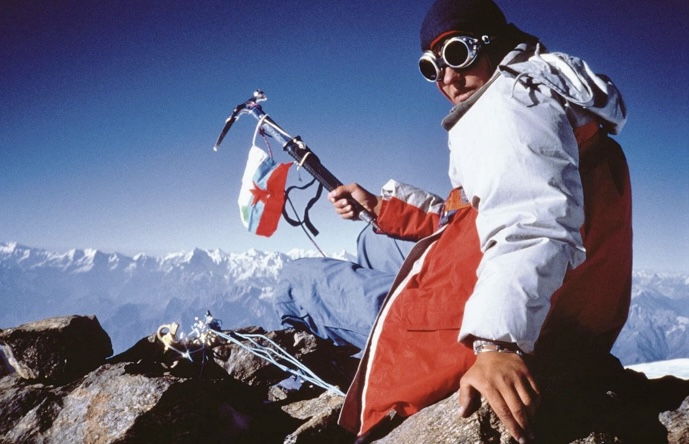
Marija Frantar. Photo: Planinskimuzej.si
Vlasta Kunaver climbed 7,021m Trisul I in 1987 and paraglided down in what was at the time a female altitude record for paragliding.
In 1986, on Broad Peak, Marija Stremfelj became the first Slovenian woman to summit an 8,000m peak. She then climbed Everest in 1990, Cho Oyu in 1995, and Dhaulagiri I in 2004.
Irena Mrak summited Gasherbrum II in 2004. In 2006, she reached the foresummit of Broad Peak with Mojca Svajger. The two women climbed the Diamir Face of Nanga Parbat in 2011.
Tina Di Batista, Tanja Grmovsek and Sandra Voglar ascended the Eternal Flame route on 6,251m Nameless Tower in 2006.

Marija Stremfelj. Photo: Bodieko.si
We would like to thank Planinska Zveza Slovenije (the Alpine Association of Slovenia) and Patricija Verdev for their help with this story.
